Search us!
Search The Word Detective and our family of websites:
This is the easiest way to find a column on a particular word or phrase.
To search for a specific phrase, put it between quotation marks. (note: JavaScript must be turned on in your browser to view results.)
Ask a Question! Puzzled by Posh?
Confounded by Cattycorner?
Baffled by Balderdash?
Flummoxed by Flabbergast?
Perplexed by Pandemonium?
Nonplussed by... Nonplussed?
Annoyed by Alliteration?

Don't be shy!
Send in your question!
Columns from 1995 to 2006 are slowly being added to the above archives. For the moment, they can best be found by using the Search box at the top of this column.
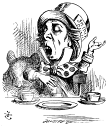 If you would like to be notified when each monthly update is posted here, sign up for our free email notification list.
If you would like to be notified when each monthly update is posted here, sign up for our free email notification list.
Trivia
All contents herein (except the illustrations, which are in the public domain) are Copyright © 1995-2020 Evan Morris & Kathy Wollard. Reproduction without written permission is prohibited, with the exception that teachers in public schools may duplicate and distribute the material here for classroom use.
Any typos found are yours to keep.
And remember, kids,
Semper Ubi Sub Ubi
|
Need… more… cake!
Dear Word Detective: We were touring someone’s new home when they showed us a little room off of the kitchen. Our hostess called it her “larder.” I would have called it a “pantry.” My British friend said it was more of a “still room.” Ok, what is going on? Why all these different names? Is it possible to have a pantry, larder and still room all in one house? — Margherita Wohletz.
Sure, why not? I once lived in a house with two kitchens. And the house I grew up in had what we called a “butler’s pantry,” a sort of little anteroom between the kitchen and the dining room where the dishes and bowls, etc., were kept. Also the gloves, hats, hammers and other tools, overcoats, mismatched shoes, and various dead appliances. If you misplaced something in that house, it was most likely to be found in the butler’s pantry. It’s a shame we never had room for an actual butler.
 I would have guessed that whatever term the hostess used for her little room was what either the architect or real estate agent called it, but it’s a bit hard to believe a “Realtor” (a trademarked term, by the way) would use the leaden term “larder.” These are the folks, after all, who transformed the “dead end street” into the fashionable “cul de sac,” and they have an ear for hoity-toity locutions. In any case, “larder” is the oldest of the three terms, appearing in English in the early 14th century, and originally meaning, as the Oxford English Dictionary puts it, “a room or closet … in which meat and other provisions are stored.” A closet full of meat may strike us today as questionable, but “larder” does come from the Latin “lardum” (pork fat, bacon). The meat in question, however, was almost certainly originally bacon or other cured pork products, making refrigeration less critical. “Larder” today is primarily used figuratively to mean “supply of food” or “livelihood” (“Bob’s job was boring, but it kept the larder full”). I would have guessed that whatever term the hostess used for her little room was what either the architect or real estate agent called it, but it’s a bit hard to believe a “Realtor” (a trademarked term, by the way) would use the leaden term “larder.” These are the folks, after all, who transformed the “dead end street” into the fashionable “cul de sac,” and they have an ear for hoity-toity locutions. In any case, “larder” is the oldest of the three terms, appearing in English in the early 14th century, and originally meaning, as the Oxford English Dictionary puts it, “a room or closet … in which meat and other provisions are stored.” A closet full of meat may strike us today as questionable, but “larder” does come from the Latin “lardum” (pork fat, bacon). The meat in question, however, was almost certainly originally bacon or other cured pork products, making refrigeration less critical. “Larder” today is primarily used figuratively to mean “supply of food” or “livelihood” (“Bob’s job was boring, but it kept the larder full”).
“Pantry” appeared in English just a few years after “larder” in the 14th century, and originally meant a small storeroom for bread and other provisions, rooted in the Old French “paneterie,” literally “bread room” (“panis” being Latin for “bread”). The purview of “pantry” was expanded over the centuries, and today a pantry can be used to store canned goods, dishes, silverware and other non-food items.
“Still room” is a new one on me, but if I ever live in a house with a pantry again, I’m definitely going to call it a “still room.” The “still” in this term, which dates back to the early 18th century, was a distilling apparatus, and the “still room” was the place where the kitchen staff would distill various liqueurs and cordials, as well as put up preserves, etc. In 19th century usage, the “still room” was where desserts as well as liqueurs were kept and tea and coffee prepared. I think your friend should forget that “larder” business and call her little room a “still room.”
The ghost in the carburetor.
Dear Word Detective: I was surprised to see no discussion of “gremlin” in your archives. I saw it recently in reference to unusual or bad automobile names. American Motors made a model called the Gremlin (which has the meaning of throwing a monkey wrench into things, I believe). I remember cartoons of gremlins as a child during WWII, which, I guess, dates me. — Maxwell M. Urata, MD.
Whoa, flashback. American Motors Corporation did indeed produce a car called the Gremlin, the first sub-compact auto produced in the US, from 1970 through 1978. The Gremlin, while supposedly not a bad little crate mechanically, was (in my opinion) just about the ugliest car ever made, resembling a mousy little sedan with its back end lopped off by a chain saw. It’s no wonder that in the years since its demise the Gremlin has become an iconic cultural symbol of lameness. Comic Book Guy on The Simpsons, for instance, owns a Gremlin.
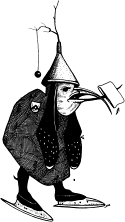 Not to belabor the point, but one really must wonder what the AMC people were thinking when they named a car, already so clearly fated to elicit snickers from the public, after a creature famous for causing mechanical breakdowns. A “gremlin” is a sort of goblin for the industrial age, a mischievous supernatural creature that causes problems or failure in any sort of machine, especially airplanes. The term apparently originated as Royal Air Force slang during WWII, where mechanical problems with no known cause were chalked up to “gremlins” messing with the planes. The roots of the word “gremlin” are unknown, but one plausible suggestion traces it to the Irish “gruaimín,” which apparently means “mean-tempered little fellow.” The “lin” ending of “gremlin” probably owes a bit to “goblin” as well. Not to belabor the point, but one really must wonder what the AMC people were thinking when they named a car, already so clearly fated to elicit snickers from the public, after a creature famous for causing mechanical breakdowns. A “gremlin” is a sort of goblin for the industrial age, a mischievous supernatural creature that causes problems or failure in any sort of machine, especially airplanes. The term apparently originated as Royal Air Force slang during WWII, where mechanical problems with no known cause were chalked up to “gremlins” messing with the planes. The roots of the word “gremlin” are unknown, but one plausible suggestion traces it to the Irish “gruaimín,” which apparently means “mean-tempered little fellow.” The “lin” ending of “gremlin” probably owes a bit to “goblin” as well.
“Gremlin” percolated out of military slang as the war ended, aided by a famous children’s book written by Roald Dahl called “The Gremlins: A Royal Air Force Story,” and burrowed into popular culture. One classic 1963 episode of The Twilight Zone, “Nightmare at 20,000 Feet,” featured a pre-Star Trek William Shatner as an airline passenger who spots an actual gremlin, looking a bit like an albino monkey, tearing up the wing of the plane (“Gremlins! Gremlins! I’m not imagining it, he’s out there! Don’t look, he’s not out there now. He jumps away whenever anyone might see him, except me.”). Gremlins were also featured in Gremlins (1984) and the inevitable Gremlins 2 (1990), two Hollywood movies that proved it’s possible to make an evil supernatural creature boring.
“Gremlin” was pressed into service among California surfers in the 1960s to mean an inexperienced surfer, and more recently among skateboarders in an equivalent sense, probably reflecting the idea of “small annoyance” more than anything really destructive. Meanwhile, computers have become the new abode of gremlins, and while software companies may blame “bugs” and issue “patches” to fix the problems, the rest of us suspect that the gremlins will always find a new way to screw things up.
From the folks who brought you Collateralized Dust Bunnies.
Dear Word Detective: I am looking for the origin of the word “charlatan.” Thus far I have found its occurrence in early Italian usage and a possible link in Latin. Are there any roots going further back? In Greek, Hebrew, Sanskrit? — Abbie Lipschutz, Houston, Texas.
Perhaps. We shall see. But before we delve into the details, I think we should take a moment to bask in the beauty of the word “charlatan” itself. It’s the pronunciation (“SHAR-lah-tan”) that really sings. “Charlatan” sounds as if it should be a kind of fine fabric or knit, or even an expensive automobile (“Like it, Kenny? It’s a twelve-cylinder Charlatan coupe, one of the only six ever made”).
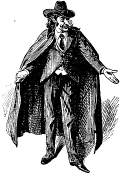 Unfortunately, it was not to be. A “charlatan” is, of course, a crook, a con artist, an impostor, a quack, a promiser of one thing and deliverer of something quite different and invariably quite useless. “If “Charlatan” were really a car maker, its product would have four flat tires and twelve depressed hamsters under the hood. Unfortunately, it was not to be. A “charlatan” is, of course, a crook, a con artist, an impostor, a quack, a promiser of one thing and deliverer of something quite different and invariably quite useless. “If “Charlatan” were really a car maker, its product would have four flat tires and twelve depressed hamsters under the hood.
While today we apply “charlatan” to any kind of con artist or “pitchman,” the original meaning of “charlatan,” when the term first appeared in English in the 17th century, was a patent medicine salesman, an itinerant seller of useless potions, liniments and cures. We also called such smooth-talking hucksters “quacksalvers” (from the “quacking” sound of their patter as they pushed their phony “salves”), a term eventually shortened to “quack.” An even older term for the species, “mountebank,” comes from the Italian “monta in banco,” literally “to climb up on the bench,” referring to the elevated platform from which the “quack” usually made his sales pitch. “Mountebank” and “quack” are both also used today in the more general senses of “con artist” and “fraud.”
The roots of “charlatan” are, perhaps fittingly, a bit obscure. According to the Oxford English Dictionary, it is derived from the Italian “ciarlatano,” meaning “babbler,” thought to be from “ciarla,” to prattle or chat, a word possibly formed in imitation of the sound of someone babbling. Etymologist Hugh Rawson, however, identifies “ciarlatano” as a mutation of “cerretano,” a seller of phony Papal indulgences, taken from the name of the Italian village of Cerretto, which supposedly produced many such con artists.
|
Makes a great gift! Click cover for more.  
400+ pages of science questions answered and explained for kids -- and adults!
FROM ALTOIDS TO ZIMA, by Evan Morris
 
|
 I would have guessed that whatever term the hostess used for her little room was what either the architect or real estate agent called it, but it’s a bit hard to believe a “Realtor” (a trademarked term, by the way) would use the leaden term “larder.” These are the folks, after all, who transformed the “dead end street” into the fashionable “cul de sac,” and they have an ear for hoity-toity locutions. In any case, “larder” is the oldest of the three terms, appearing in English in the early 14th century, and originally meaning, as the Oxford English Dictionary puts it, “a room or closet … in which meat and other provisions are stored.” A closet full of meat may strike us today as questionable, but “larder” does come from the Latin “lardum” (pork fat, bacon). The meat in question, however, was almost certainly originally bacon or other cured pork products, making refrigeration less critical. “Larder” today is primarily used figuratively to mean “supply of food” or “livelihood” (“Bob’s job was boring, but it kept the larder full”).
I would have guessed that whatever term the hostess used for her little room was what either the architect or real estate agent called it, but it’s a bit hard to believe a “Realtor” (a trademarked term, by the way) would use the leaden term “larder.” These are the folks, after all, who transformed the “dead end street” into the fashionable “cul de sac,” and they have an ear for hoity-toity locutions. In any case, “larder” is the oldest of the three terms, appearing in English in the early 14th century, and originally meaning, as the Oxford English Dictionary puts it, “a room or closet … in which meat and other provisions are stored.” A closet full of meat may strike us today as questionable, but “larder” does come from the Latin “lardum” (pork fat, bacon). The meat in question, however, was almost certainly originally bacon or other cured pork products, making refrigeration less critical. “Larder” today is primarily used figuratively to mean “supply of food” or “livelihood” (“Bob’s job was boring, but it kept the larder full”).
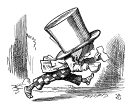
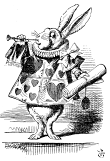 can be found
can be found 
 Not to belabor the point, but one really must wonder what the AMC people were thinking when they named a car, already so clearly fated to elicit snickers from the public, after a creature famous for causing mechanical breakdowns. A “gremlin” is a sort of goblin for the industrial age, a mischievous supernatural creature that causes problems or failure in any sort of machine, especially airplanes. The term apparently originated as Royal Air Force slang during WWII, where mechanical problems with no known cause were chalked up to “gremlins” messing with the planes. The roots of the word “gremlin” are unknown, but one plausible suggestion traces it to the Irish “gruaimín,” which apparently means “mean-tempered little fellow.” The “lin” ending of “gremlin” probably owes a bit to “goblin” as well.
Not to belabor the point, but one really must wonder what the AMC people were thinking when they named a car, already so clearly fated to elicit snickers from the public, after a creature famous for causing mechanical breakdowns. A “gremlin” is a sort of goblin for the industrial age, a mischievous supernatural creature that causes problems or failure in any sort of machine, especially airplanes. The term apparently originated as Royal Air Force slang during WWII, where mechanical problems with no known cause were chalked up to “gremlins” messing with the planes. The roots of the word “gremlin” are unknown, but one plausible suggestion traces it to the Irish “gruaimín,” which apparently means “mean-tempered little fellow.” The “lin” ending of “gremlin” probably owes a bit to “goblin” as well. Unfortunately, it was not to be. A “charlatan” is, of course, a crook, a con artist, an impostor, a quack, a promiser of one thing and deliverer of something quite different and invariably quite useless. “If “Charlatan” were really a car maker, its product would have four flat tires and twelve depressed hamsters under the hood.
Unfortunately, it was not to be. A “charlatan” is, of course, a crook, a con artist, an impostor, a quack, a promiser of one thing and deliverer of something quite different and invariably quite useless. “If “Charlatan” were really a car maker, its product would have four flat tires and twelve depressed hamsters under the hood.



Recent Comments